Blog series and project introduction
Join us for our retrospective three-part blog series as geography students Elmiina, Liisi, Ronja, and Tyyne travel through Norway, Malta, and Germany shaping innovations in education for sustainable development! This three-part blog series showcases the University of Turku’s (UTU) students’ point-of-view of the Shape2Gether -project summer schools. What have the students developed during their summer schools? What have they learned? Where have they travelled?
The Shape2Gether -project is about contextualizing geosciences, new technologies, and serious games with climate change. These extremely timely topics have been at the heart of the summer schools, where UTU students have worked with other students and professors from different European partner universities: Palacký University Olomouc (UPOL), Ruhr Universität Bochum (RUB), Utrecht University (UU), L-Università ta’ Malta (UM), Technische Universität Wien (TUW), and Norwegian University of Science and Technology (NTNU). A Finnish company Seppo is also a partner of the project.
Find out more information about the Shape2Gether project from the project website or on DIDAIhub project website.
Now, let’s dive into the first blog post. Enjoy!
Student participant introduction
Hello! We are four geography students from University of Turku—Elmiina, Liisi, Ronja and Tyyne—who took part in the Erasmus+ Shape2Gether -project during 2024 and 2025.
Elmiina is starting her fifth and final year specializing in physical geography, Liisi is a fourth-year student specializing in human geography, Ronja is a third-year student specializing in teaching, and Tyyne is a third-year student specializing in physical geography. So, all kinds of interests here. We got to be part of this Erasmus+ Shape2Gether -project which is part of a bigger Erasmus+ KA220 project funded by the European Union.
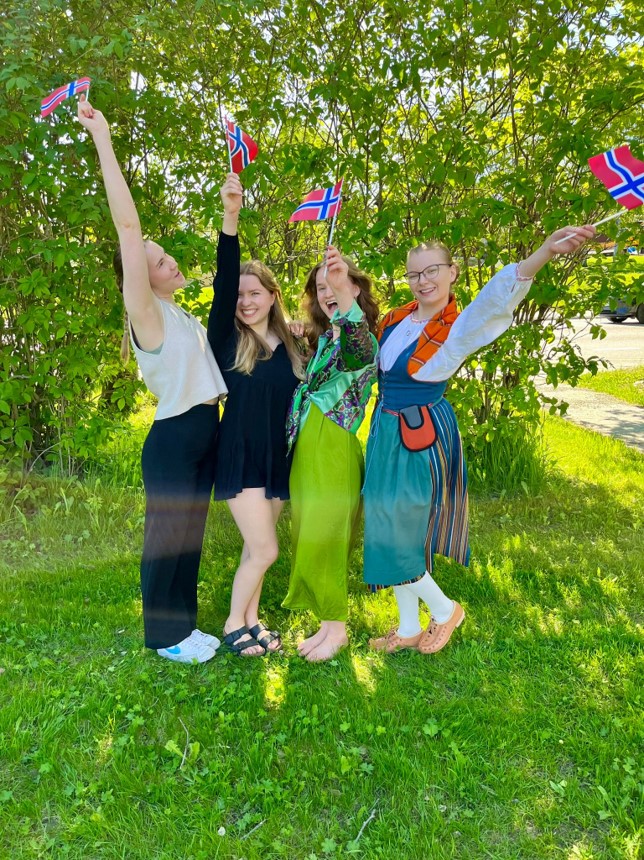
Summer School 1: Tautra & Trondheim, Norway, 13-19 May 2024
The first summer school was held in Norway, Tautra and Trondheim, from 13 to 19 of May in 2024. We had two UTU geography professors with us in Norway, Niina and Jukka Käyhkö.
The first half of the week took place on the small and picturesque island of Tautra. It’s stunning cultural landscapes, rich flora and fauna, conservation areas for nesting birds, cultural landmarks, like the ruins of an old monastery, and its diverse coastal features—including wetlands, tidal beaches, and rocky shores—made it a versatile learning environment.
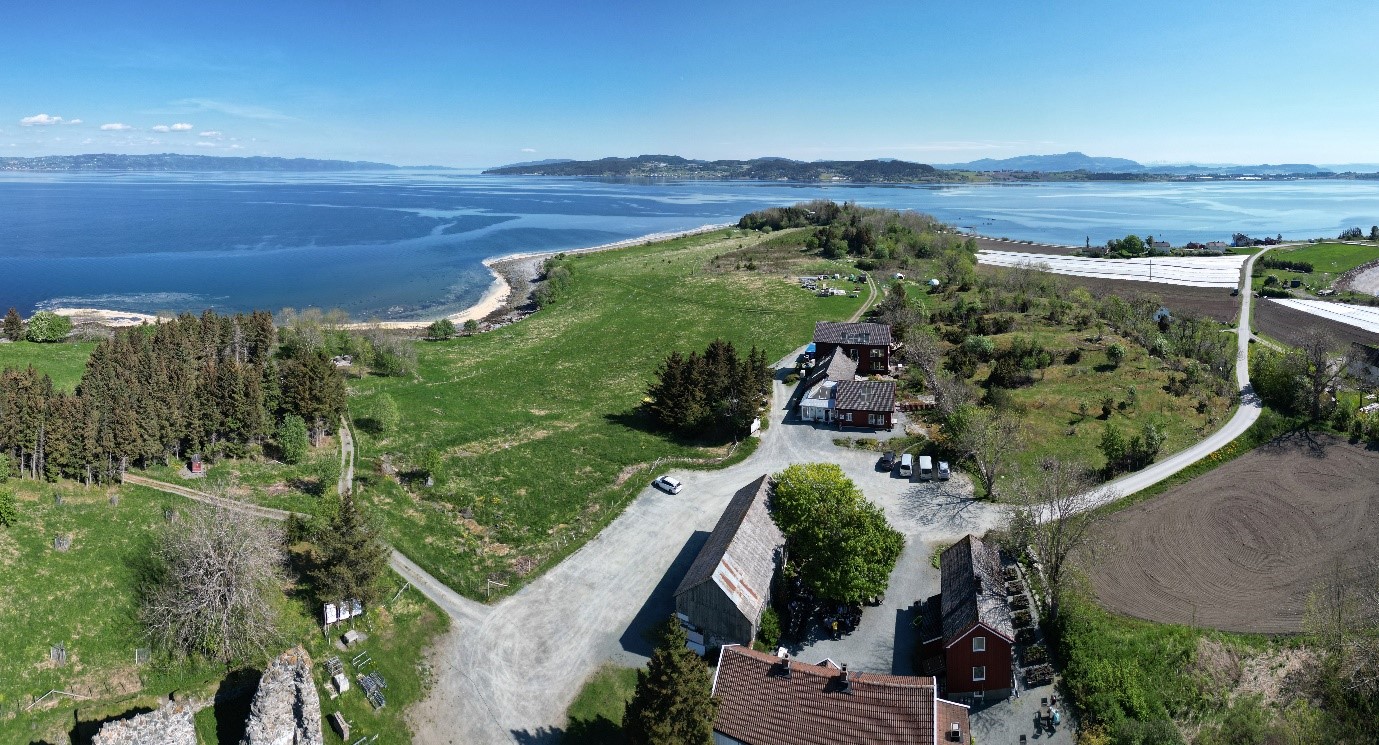
The island provided an ideal setting for our fieldwork. One particularly memorable moment was when our entire team visited a tidal beach during low tide. For those of us from regions like Finland, where the Baltic Sea experiences only minimal tidal fluctuations, witnessing a significant tide was especially fascinating. You can only imagine how excited us geographers were and how this was a truly an unforgettable experience.
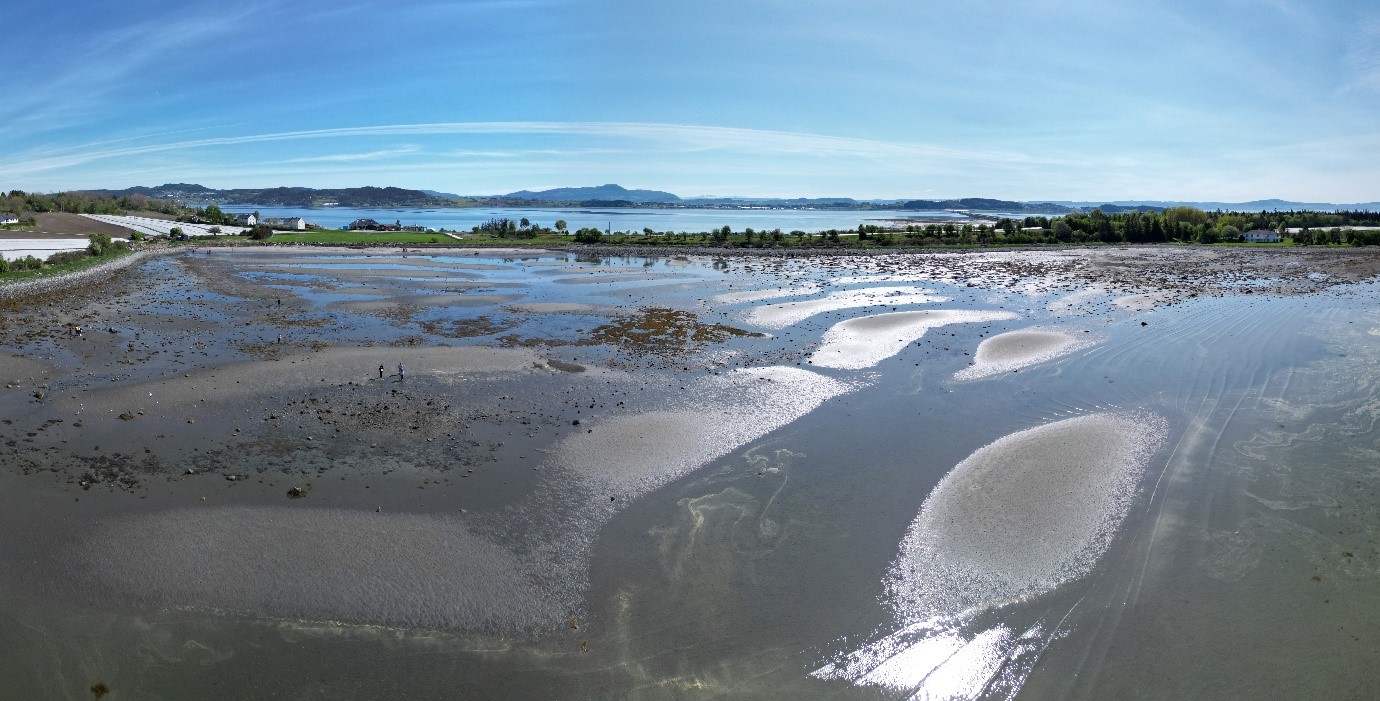
Beyond the beach, we explored many other intriguing locations on the island, mainly through our small group projects. In 7 groups of 4-5 people, we collected various types of data from different areas of the island. This data was used to create virtual tours with the goal of communicating climate change issues specific to our assigned group project areas. Starting with 360° photos as our base, we enhanced these scenes with additional layers of material, such as text, audio, and photographs, allowing users to experience the environment interactively, as though they were physically present. The data for the virtual tours was manually gathered at Tautra island and later in Trondheim assembled as a virtual tour using the ThingLink platform.
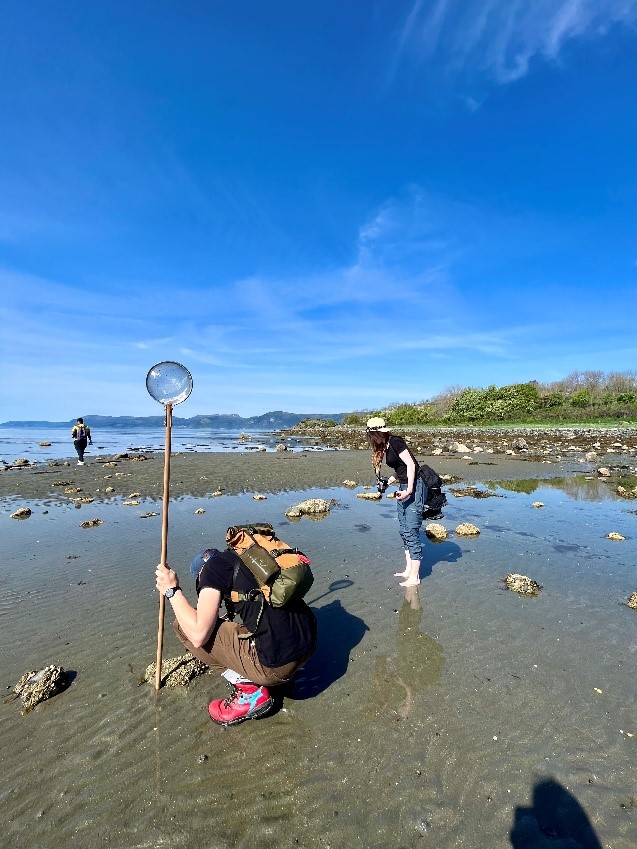
Each group was assigned a different target audience and location on the island. This is how our ThingLink projects unfolded within our groups:
- Elmiina’s group was assigned an area that was an irrigation dependent agricultural field on the island. The group aimed their ThingLink project at 14-year-old teenagers and the main goal was to make them think about local effects of climate change, on a scale of one family. The virtual tour was a storyline of a 14-year-old boy living on a farm on Tautra Island and his family farming these irrigation dependent fields. The project wanted to showcase how climate change might affect the livelihood of his family.
- Tyyne’s group’s ThingLink project targeted Master of Arts students in Natural Resource Management. The designated area was located in the Northern part of the island, close to the Tautra Kloster. The group created a virtual tour of the most important resources on the assigned area and which type of possible effects climate change could have on these resources. The work also took into consideration biological and cultural factors in the area, for example birds and tourism, to make the full storyline more complex.
- Liisi’s group was assigned an area on the north bank of the island. The group focused on land use changes in the area from farming to tourism and grazing and prepared to present their case to local administrators. The main connection between land use and climate change was the significance of open areas to the cooling albedo effect.
- Ronja’s group targeted the delegation of the United Nations Environment Programme (UNEP) as their audience. This group’s designated area were the grounds around the cabin. The goal was to discuss climate change, human impact on the island, and invasive species, as these were key environmental issues that the UNEP audience is concerned with. The storyline aimed to introduce as many indicators as possible to demonstrate various changes occurring on the island.
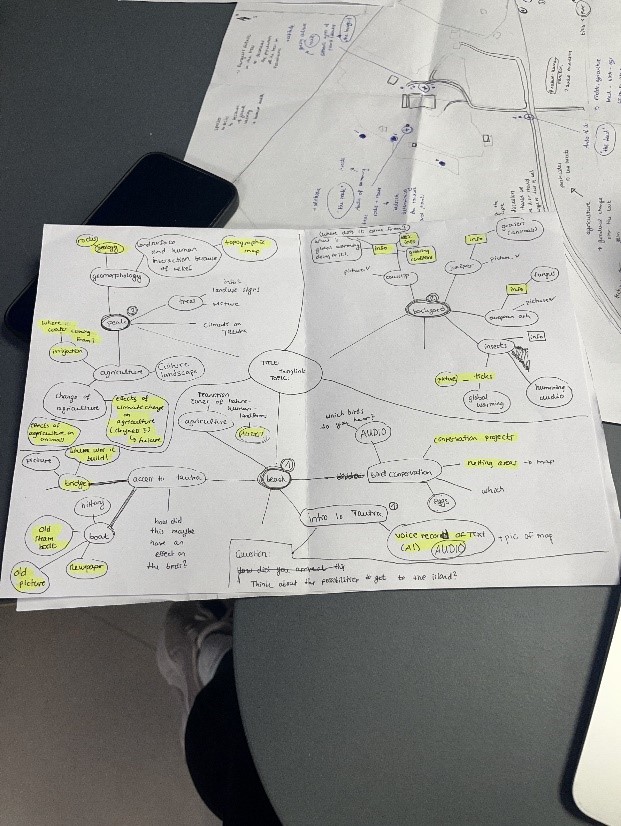
Maybe that’s enough of the Tautra island life? After Tautra, we transferred to Trondheim, where we stayed at a hostel and worked at NTNU campuses. We mainly worked on our ThingLink projects. It took a lot of thinking and formatting to create a whole virtual reality (VR) tour. In addition to our ThingLink groups, we worked in smaller Seppo groups throughout the week. This meant that we completed daily gamified Seppo exercises in smaller groups, on our phones, often reflecting on the previous day’s activities. The gamification element made these tasks more engaging and enjoyable.
During this summer school, teachers held lectures about educating and communicating scientific data about climate change. The lectures and the ThingLink projects formed a balanced combination of theory and practice, as we could apply things we learned from lectures to our projects. For example, lectures highlighted the importance of addressing the emotions arising from climate change, because climate change scenarios may discourage people instead of motivating them to take action. In practice this meant that we took our assigned target groups into careful consideration when planning our group projects and focused on solutions rather than problems. We learned that it is important to communicate climate change related issues in age-appropriate ways and inspire the target groups to act in ways possible for them.
We also learned more about geotechnologies that can be used in educating people about climate change. We visited NTNU’s virtual reality (VR) and augmented reality (AR) lab, got to try VR & AR glasses, and walking in a VR world. We also learned how to make diverse learning materials in ArcGIS StoryMaps.
On the last day of this summer school, we pitched our ThingLink projects to the class, discussed what we had learned during the week, and were awarded prizes for the best reflective Seppo tasks.
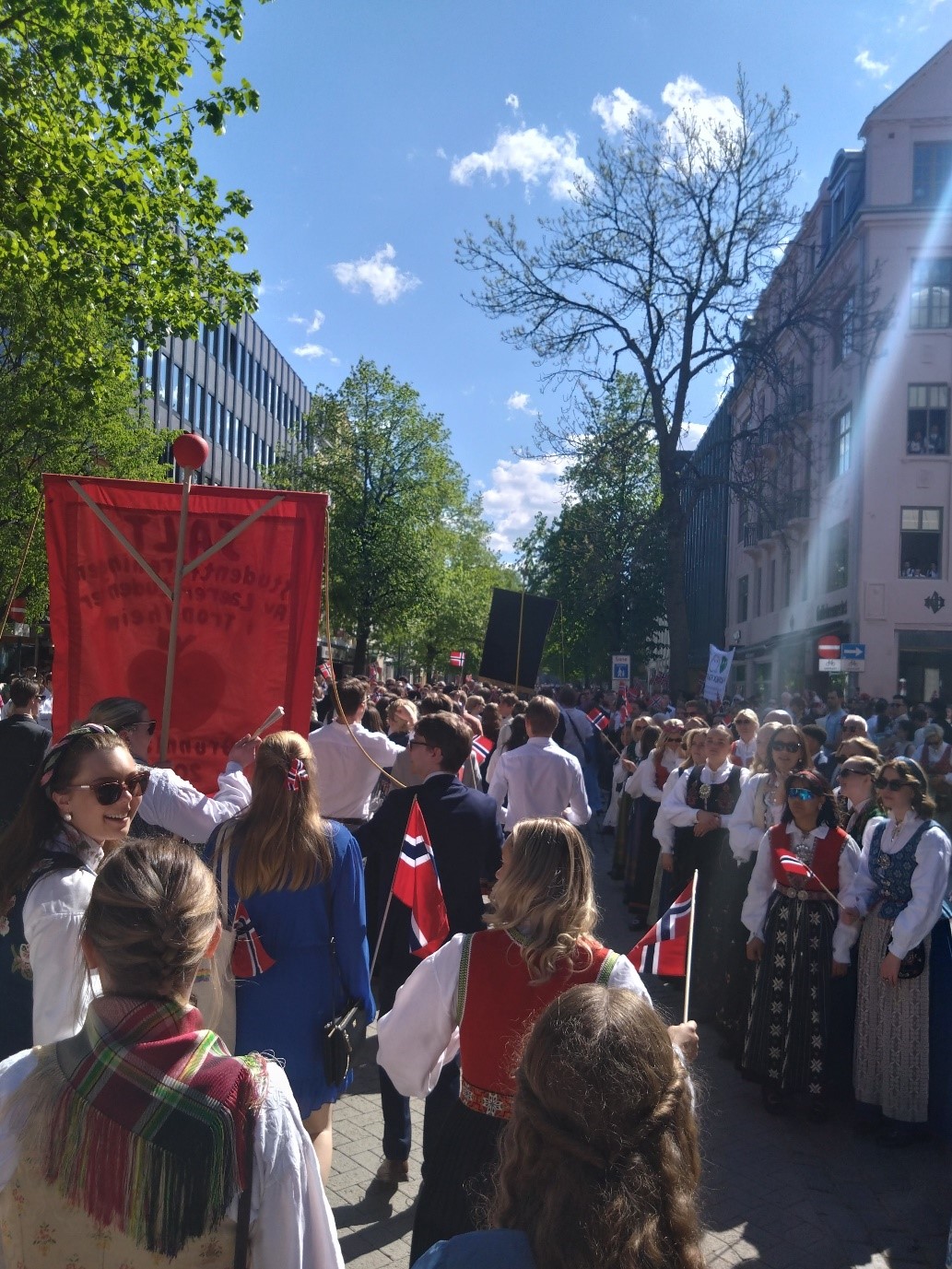
Knowledge and connections beyond the curriculum
Already during the first few days on the Tautra island we realized that being out on the field and doing groupwork made our international group feel like a community a lot faster than in a classroom context. We were all interested in the same subjects, but our strengths and interests differed a bit from one another, which made group work fun and rewarding. The additional excitement from getting to know people from all over Europe made us cooperate well with each other.
A memorable aspect of this summer school was also to learn that to make change, we don’t have to present perfect work or only come up with serious-minded solutions for climate change. When we presented our ThingLink projects, they weren’t entirely finished, but the most important thing was that we had worked together as a group and got valuable ideas from each other. A lot of the learning methods were also playful and creative, which can motivate us to continue studying wicked issues, such as climate change.
Apart from the studies, we also got to do some sightseeing and celebrate the Norwegian Constitution Day (17 May), which was an unforgettable experience for all of us. We joined the Norwegian students for a delicious brunch and learned how to play traditional outdoor games. One of the highlights of the constitution day was also a huge national day parade in the city center of Trondheim. We even got to be a part of it and yell along with the others: “Hip, hip, hurraa!”. In the evening the whole Shape2Gether group was invited to a Norwegian professor’s yard to enjoy grilled food, each other’s company, and a breathtakingly beautiful view over the Trondheimsfjord.
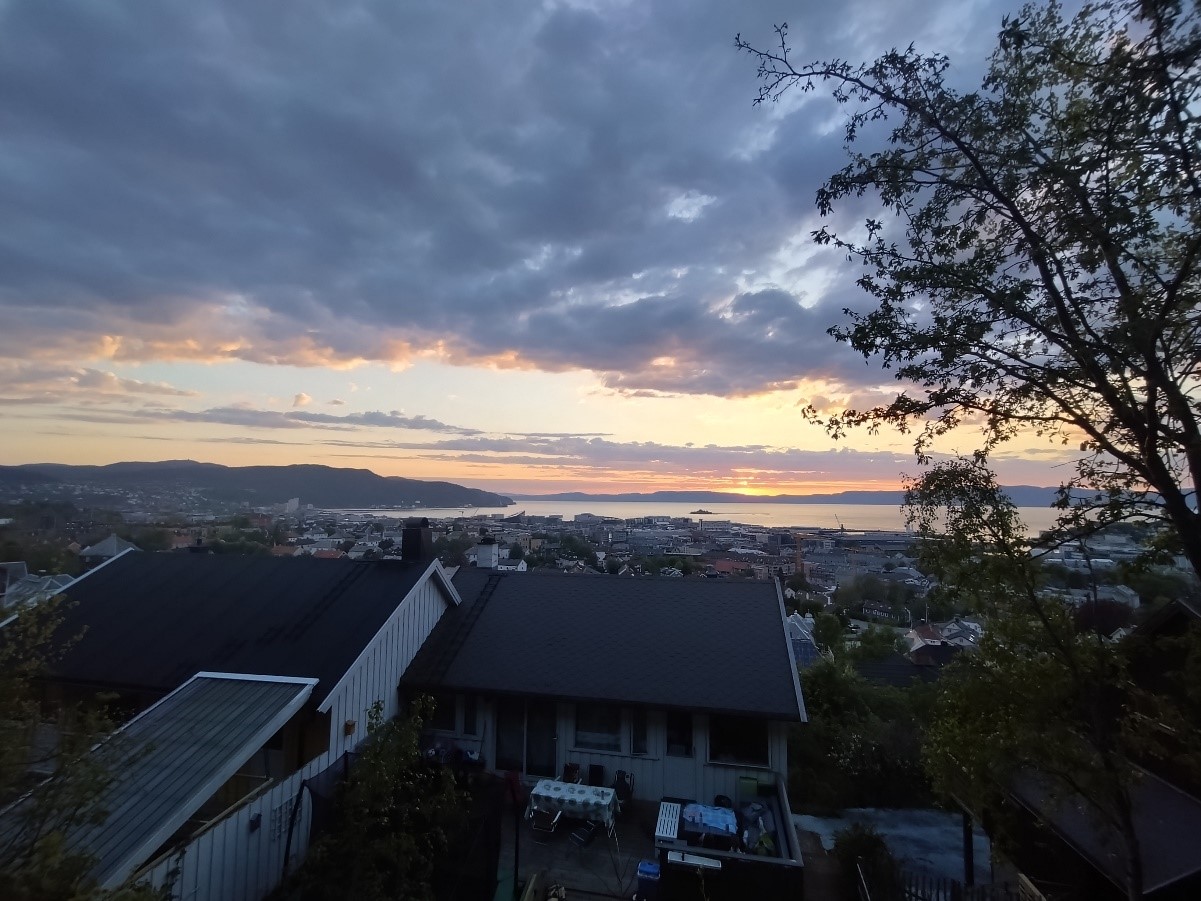
The weather was surprisingly good during our week considering we were on the coast of Norway 🙂
See you in the second part of this blog series, where we go through our second summer school in Malta. We are really looking forward to the second summer school after the first summer school in Norway!